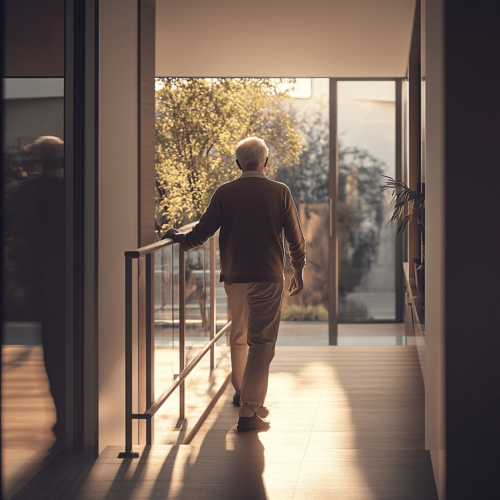As the leading cause of injury-related death, hospitalization, and emergency department visits among older adults in Canada, falls are a major concern for seniors. In 2018 alone, fall-related injuries cost Canadians $5.6 billion, highlighting the need for effective prevention strategies and education.
Why Does our Risk of Falls Increase as We Age?
As we get older, our bodies naturally undergo changes that can affect movement, balance, and strength. For seniors, these changes can make everyday tasks more challenging and increase the likelihood of falling. In fact, over a third of adults aged 65 and older experience falls each year, and this rate increases significantly after age 80. Injuries resulting from falls—especially hip fractures—can lead to extended hospital stays and a lower quality of life. Even without an injury, a fall can cause a senior to lose confidence, leading to reduced activity levels and feelings of isolation.
Useful Fall Prevention Tips for Seniors
1. Exercise Regularly
Regular physical activity is essential for improving balance, flexibility, and muscle strength – crucial factors that affect your risk of falls. Exercises like tai chi and gentle yoga focus on stability and coordination, and have been shown to significantly reduce the risk of falls among seniors. Programs combining physical and mental exercises are especially effective, as they enhance balance and help the mind stay engaged during movement. For a list of programs and events geared for older adults in Ancaster, Hamilton, and the surrounding area, check out the City of Hamilton, Ancaster Senior Achievement Centre, and Hamilton Public Library.
2. Safety Audit your Home and Make Adjustments
Since many falls happen at home, small adjustments to your living space can make a big difference in fall prevention. Here are some suggestions to start:
- Clear pathways: Keep hallways and frequently used areas free from clutter, cords, and other potential tripping hazards.
- Improve lighting: Ensure adequate lighting in all rooms, especially in hallways, bedrooms, and bathrooms.
- Install grab bars and railings: Especially in bathrooms and along staircases, to provide extra stability.
- Use non-slip mats: Especially in areas prone to moisture (bathrooms and kitchens). If you can’t find any, ensure rugs and mats are properly secured.
3. Use Proper Footwear and Assistive Devices
Supportive, non-slip shoes enhance stability, especially for those with decreased balance or leg strength. Consider orthotics if you require additional support, as it helps to balance and enhance your body’s efficiency, reduce pain, and improve overall performance. Choose shoes with good arch support and solid soles. For added stability, you may want to use a cane, walker, or other assistive devices to help navigate stairs, slippery floors, or uneven ground. There are healthcare providers who specialize in footwear and assistive devices, and can provide recommendations based on individual needs.
4. How is your Vision and Hearing?
Keep checking because good vision and hearing are essential for preventing falls and maintaining balance. Poor eyesight can make it harder to see steps or obstacles, and hearing loss can interfere with how you perceive and navigate your surroundings (situational awareness). Regular eye and hearing check-ups are simple and necessary to minimize falls risk.
Manage Your Health and Review Medications
Certain medical conditions, such as arthritis, osteoporosis, and blood pressure irregularities, can increase the likelihood of falling. If you have chronic health conditions, schedule regular check-ups to manage symptoms effectively.
A side note that certain medications may cause dizziness, drowsiness, or affect your balance. If you notice any side effects that increase your fall risk, discuss them with your healthcare provider. They can suggest alternative medications or adjust your dosage to ensure you are not at risk for falls.
Conclusion: Building a Foundation of Safety and Independence
As we age, it’s important to understand that our risk of falls and related injuries increase. Implementing these fall prevention tips can help older adults create a safer living environment and enhance physical strength, stability, and overall well-being. Prevention begins with small steps but can lead to big improvements in safety and help maintain function and independence.
For additional resources, visit our previous blogs:
- Fall Prevention: A Guide to Mastering Balance for Every Age
- Understanding Concussions: Prevention, Symptoms, and Recovery
Alliance Chiropractic is dedicated to supporting your health and wellness. While our focus remains your musculoskeletal system, we are committed to providing you with information to help inform and educate you on other factors that could affect your health. If we don’t have the answers, our team will do our best to help you find the resources that do.
Want to stay updated on health information? Subscribe to our quarterly newsletter.
Information for this blog was sourced from parachute.ca, Public Health Agency of Canada, BMJ Journal, and health infobase canada.

